
Do you have a question about the Toshiba 40L1400UC and is the answer not in the manual?
| Screen Size | 40 inches |
|---|---|
| Display Type | LED |
| Display Technology | LED |
| Resolution | 1920 x 1080 |
| Refresh Rate | 60 Hz |
| HDMI Ports | 3 |
| USB Ports | 1 |
| Wi-Fi | No |
| Smart TV | No |
| Built-in Wi-Fi | No |
| Weight | 20.5 lb |
Warnings about fire, electric shock, and opening the appliance.
Follow manufacturer's recommendations for safe installation and use.
Use certified mounts, follow instructions, and ensure wall suitability.
Handle dropped TVs with care, avoid broken glass, liquid, and electric shock.
Follow pedestal assembly instructions; ensure TV is on a sturdy surface.
Use certified mounts, follow instructions, and ensure wall suitability.
Explanation of danger, warning, caution, and note icons used in the manual.
Overview of the TV's advanced features and capabilities.
Guide to initial setup, connecting devices, and basic operation.
Information on connecting external devices to the TV's rear ports.
Guide to common audio/video connector types for device connection.
Instructions for connecting VCRs, antennas, and camcorders to the TV.
Guide for connecting devices with HDMI or DVI outputs to the TV.
How to connect external audio systems using optical audio output.
Display computer output on the TV and hear sound through TV speakers.
Step-by-step guide to installing AAA batteries in the remote control.
Explanation of all buttons on the TV remote control and their functions.
Quick overview of the TV's menu system structure and options.
How to use the remote control to access and navigate on-screen menus.
Step-by-step initial setup process for language, time zone, and input.
Automatic channel scanning and storage for active channels in your area.
Manually enter channels if the physical channel number is known.
How to select different video input sources available on the TV.
Navigate channels, tune, and manage favorite channels using the Channel Browser.
Adjusting the display format (aspect ratio) of the picture on screen.
Automatic aspect ratio selection and stretching 4:3 programs.
Fine-tuning brightness, contrast, color, tint, and sharpness.
Customizing closed caption display characteristics (color, size, edge).
How to partially reduce or turn off the TV's sound output.
DTS TruSurround™, Sound Mode, Stable Sound™, Dolby® DRC.
Setting, forgetting, changing, or deleting the TV's PIN code.
Setting a time limit for video games, activating input lock.
Enjoying photo or music content stored on a USB storage device.
Viewing photos and playing music files, individually or together.
Setting the TV to automatically turn off after a specified time.
Controlling connected HDMI CEC devices (players, receivers) with the TV remote.
Selecting the RGB range (Auto, Full, Limited) for HDMI inputs.
Adjusting standard colors, hue, saturation, and brightness for picture quality.
Adjusting picture's color temperature and black level detail.
Enhancing black levels and automatically adjusting contrast for video.
Soften weak signals to reduce noise and adjust edge sharpness for clearer picture.
Basic steps for resolving common TV problems before calling service.
Checking connections, input sources, and antenna reception for picture issues.
Resolving issues with no sound, muted sound, or channel tuning problems.
Resolving problems with captions, HDMI CEC, and HDMI cable issues.
Details on broadcast standards and frequency bands for TV reception.
Information on power requirements, consumption, and speaker details.
Details on TV input/output terminals, physical dimensions, and weight.
List of supported video resolutions and frequencies for HDMI inputs.

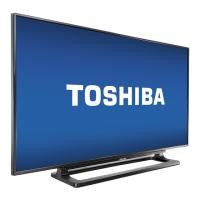
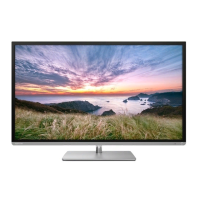



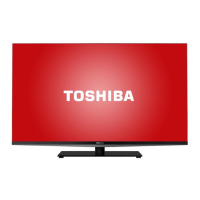
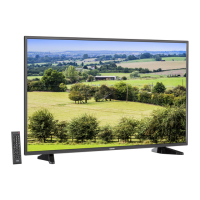
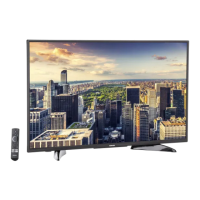



